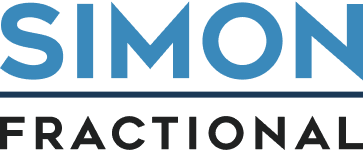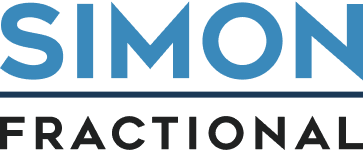According to the 2025 SaaS Sales Benchmark Report by OpenView Partners, the average B2B SaaS sales cycle lengthened 18% over the past two years. Despite more sophisticated marketing tools and smarter CRMs, buyers are taking longer, involving more stakeholders, and moving cautiously. For SaaS founders and revenue leaders, the question isn’t just how to grow pipeline—it’s how to close it faster without forcing bad-fit deals that lead to churn.
In this blog, we’ll discuss tactical strategies for shortening your SaaS sales cycle while maintaining (or even improving) deal quality, trust, and long-term lifetime value (LTV).
Why B2B SaaS Sales Cycles Are Slowing
Several key trends have contributed to longer decision timelines:- Buying committees are bigger: Gartner reports the average B2B deal now involves 6–10 decision-makers.
- Budgets are scrutinized: Post-2023, CFOs demand tighter justification for tech spend.
- Self-education dominates: According to Forrester, buyers conduct 57% of the journey before speaking to sales.
- Fear of making the wrong choice: Risk-aversion increases in uncertain markets.
How to Shorten the Sales Cycle Without Rushing Buyers
Shortening the cycle isn’t about being aggressive. It’s about removing friction, building trust faster, and enabling clear decisions. Here’s how to do it at each funnel stage:Top of Funnel (TOFU): Capture Qualified Attention
Attracting the right leads early sets the tone for a faster close later.Strategies
- Precise targeting: Focus on ICP-aligned audiences, not volume.
- Clear value proposition: Eliminate jargon. Emphasize specific business outcomes.
- Use gated content smartly: Whitepapers, benchmarks, or ROI guides that attract serious buyers.
- Tighten ad copy and landing pages around buyer pain points.
- Use intent data to prioritize inbound leads who are actively researching.
- Leverage LinkedIn conversational ads to reach decision-makers where they spend time.
Middle of Funnel (MOFU): Nurture Intelligently (Critical!)
This is where most SaaS companies lose speed. Buyers show early interest, then stall due to uncertainty or internal politics.A strong, nurturing campaign is the antidote.
Build MOFU nurturing with:
- How-to Guides: Help buyers understand “how it works” in simple, visual ways.
- Infographics: Summarize complex workflows, integrations, and benefits.
- Explainer Videos: Short, digestible content that shows outcomes, not just features.
- Case Studies: Industry-specific success stories that show ROI and risk reduction.
- Social Proof: Logos, testimonials, and third-party reviews woven into nurture streams.
- ROI Calculators: Let buyers self-justify the investment.
- 5–7 touchpoints over 30–45 days.
- Mix educational and commercial intent.
- Personalize based on initial content interaction (e.g., different flows for demo vs. whitepaper download).
- Host webinars focused on use cases or customer success stories.
- Create downloadable checklists for common buyer workflows.
- Launch nurture sequences tied to industry pain points.
Bottom of Funnel (BOFU): Remove Friction, Increase Confidence
When prospects signal buying intent, speed matters—but so does reassurance.Strategies:
- Fast Demo Scheduling: Use tools like Chili Piper or HubSpot Meetings to eliminate back-and-forth.
- Tailored Demo Experience: Customize based on prospect industry, role, or use case.
- Clear Implementation Path: Offer onboarding plans upfront to remove fear of adoption headaches.
- Pricing Transparency: Hidden pricing slows deals. Be as open as possible early.
- Objection Handling Guides: Arm your sales reps with fast, documented responses to common questions.
- Post-demo “Recap One-Pagers”
- Competitive Battlecards
- Quickstart Guides
- Customer References (especially relevant by industry or company size)
Additional BOFU Acceleration Plays:
- Offer “pilot” programs for hesitant buyers to test your solution with limited risk.
- Provide access to onboarding specialists during the evaluation phase.
- Highlight time-to-value in all BOFU communications.
Alignment Between Marketing and Sales
Sales cycle compression isn’t a “sales-only” task. Marketing must be involved through:- Enabling better MQL-to-SQL handoffs.
- Equipping SDRs/BDRs with mid-funnel content.
- Collaborating on nurture streams and follow-ups.
- Prioritizing buyer enablement content, not just awareness campaigns.
Sales Enablement Must-Haves:
At Simon Fractional, we’ve optimized B2B SaaS funnels across industries: Ask yourself:- Updated persona profiles
- Buyer journey maps
- Objection handling matrices
- Content libraries sorted by funnel stage
Real-World Success Stories from Simon Fractional
We’ve helped SaaS companies:- Shrink sales cycles by 32% by implementing behavioral nurturing based on real buyer signals.
- Increase SQL-to-closed-won rates by 28% after redesigning demo flows and proposal templates.
- Cut time-to-demo in half by automating booking links post-MQL handoff.
- Boost close rates by layering customer video testimonials into the final proposal.
- Increase average deal size by proactively upselling during onboarding conversations.
Metrics to Track Sales Cycle Optimization
Don’t just “hope” the cycle shrinks. Measure it. Key Metrics:- Time from MQL to SQL
- Time from SQL to Demo
- Time from Demo to Proposal Sent
- Time from Proposal to Close-Won
- Percentage of Opportunities Advanced Stage-to-Stage
- Win Rate by Lead Source
Revenue ops insight: What gets measured gets managed. Shorter, cleaner sales cycles create compounding revenue gains.
Create a dashboard that visualizes funnel velocity KPIs so leadership can spot slowdowns early.Final Thoughts: Speed is Trust
In B2B SaaS, speed doesn’t mean aggression. It means clarity, enablement, and proactive obstacle removal. Buyers want to buy—but only if you make it easy, transparent, and confidence-inspiring. Founders who optimize their full funnel—from nurturing to demo to close—will scale faster, healthier, and more predictably.Acceleration mindset: It’s not about pushing buyers. It’s about pulling friction out of their path.
Speed creates trust. Trust creates deals. Deals create momentum.Next Steps
Ready to shorten your SaaS sales cycle without cutting deal quality? Let’s map your funnel friction points together.Doug Simon
My experience in B2B SaaS started in 2010 when I developed a first-of-its-kind product, creating an entire new category.


